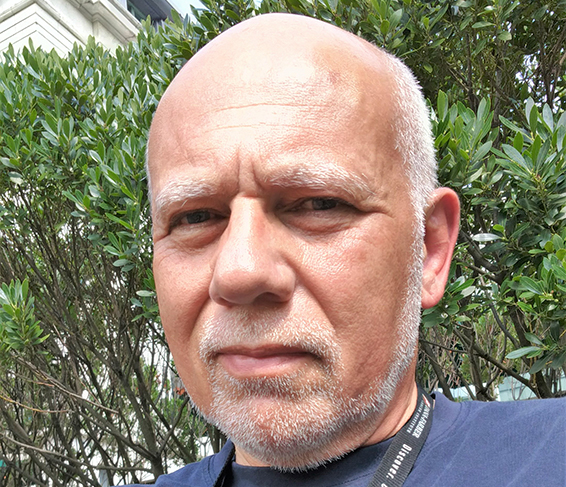-
ALK peptide vaccination restores the immunogenicity of ALK-rearranged non-small cell lung cancer. Nat Cancer. 2023 07; 4(7):1016-1035. View in:
Pubmed
-
Pre-T cell receptor self-MHC sampling restricts thymocyte dedifferentiation. Nature. 2023 01; 613(7944):565-574. View in:
Pubmed
-
Does DPP-IV Inhibition Offer New Avenues for Therapeutic Intervention in Malignant Disease? Cancers (Basel). 2022 Apr 21; 14(9). View in:
Pubmed
-
TCR-mimic bispecific antibodies to target the HIV-1 reservoir. Proc Natl Acad Sci U S A. 2022 04 12; 119(15):e2123406119. View in:
Pubmed
-
Molecular design of the ?dT cell receptor ectodomain encodes biologically fit ligand recognition in the absence of mechanosensing. Proc Natl Acad Sci U S A. 2021 06 29; 118(26). View in:
Pubmed
-
Intrinsic Immunogenicity of Small Cell Lung Carcinoma Revealed by Its Cellular Plasticity. Cancer Discov. 2021 08; 11(8):1952-1969. View in:
Pubmed
-
Pre-T cell receptors topologically sample self-ligands during thymocyte ß-selection. Science. 2021 01 08; 371(6525):181-185. View in:
Pubmed
-
Post-developmental extracellular proteoglycan maintenance in attractin-deficient mice. BMC Res Notes. 2020 Jun 24; 13(1):301. View in:
Pubmed
-
Interaction of SHP-2 SH2 domains with PD-1 ITSM induces PD-1 dimerization and SHP-2 activation. Commun Biol. 2020 03 17; 3(1):128. View in:
Pubmed
-
Cancer Neoepitopes for Immunotherapy: Discordance Between Tumor-Infiltrating T Cell Reactivity and Tumor MHC Peptidome Display. Front Immunol. 2019; 10:2766. View in:
Pubmed
-
NMR: an essential structural tool for integrative studies of T cell development, pMHC ligand recognition and TCR mechanobiology. J Biomol NMR. 2019 Jul; 73(6-7):319-332. View in:
Pubmed
-
Linking a mutation to survival in wild mice. Science. 2019 02 01; 363(6426):499-504. View in:
Pubmed
-
The T Cell Antigen Receptor a Transmembrane Domain Coordinates Triggering through Regulation of Bilayer Immersion and CD3 Subunit Associations. Immunity. 2018 11 20; 49(5):829-841.e6. View in:
Pubmed
-
Regulation of thymocyte trafficking by Tagap, a GAP domain protein linked to human autoimmunity. Sci Signal. 2018 06 12; 11(534). View in:
Pubmed
-
Downregulation of semaphorin 3E promotes hallmarks of experimental chronic allergic asthma. Oncotarget. 2017 Nov 17; 8(58):98953-98963. View in:
Pubmed
-
Semaphorin 3E Alleviates Hallmarks of House Dust Mite-Induced Allergic Airway Disease. Am J Pathol. 2017 Jul; 187(7):1566-1576. View in:
Pubmed
-
Chemorepellent Semaphorin 3E Negatively Regulates Neutrophil Migration In Vitro and In Vivo. J Immunol. 2017 02 01; 198(3):1023-1033. View in:
Pubmed
-
Pre-T Cell Receptors (Pre-TCRs) Leverage Vß Complementarity Determining Regions (CDRs) and Hydrophobic Patch in Mechanosensing Thymic Self-ligands. J Biol Chem. 2016 Dec 02; 291(49):25292-25305. View in:
Pubmed
-
Pre-TCR ligand binding impacts thymocyte development before aßTCR expression. Proc Natl Acad Sci U S A. 2015 Jul 07; 112(27):8373-8. View in:
Pubmed
-
RGMb is a novel binding partner for PD-L2 and its engagement with PD-L2 promotes respiratory tolerance. J Exp Med. 2014 May 05; 211(5):943-59. View in:
Pubmed
-
Dynamic control of ß1 integrin adhesion by the plexinD1-sema3E axis. Proc Natl Acad Sci U S A. 2014 Jan 07; 111(1):379-84. View in:
Pubmed
-
Plxnd1 expression in thymocytes regulates their intrathymic migration while that in thymic endothelium impacts medullary topology. Front Immunol. 2013; 4:392. View in:
Pubmed
-
CD40L-Tri, a novel formulation of recombinant human CD40L that effectively activates B cells. Cancer Immunol Immunother. 2013 Feb; 62(2):347-57. View in:
Pubmed
-
A coprecipitation-based validation methodology for interactions identified using protein microarrays. Methods Mol Biol. 2011; 723:239-54. View in:
Pubmed
-
Serologic markers of effective tumor immunity against chronic lymphocytic leukemia include nonmutated B-cell antigens. Cancer Res. 2010 Feb 15; 70(4):1344-55. View in:
Pubmed
-
Ethnic differences and functional analysis of MET mutations in lung cancer. Clin Cancer Res. 2009 Sep 15; 15(18):5714-23. View in:
Pubmed
-
p85 Associates with unphosphorylated PTEN and the PTEN-associated complex. Mol Cell Biol. 2009 Oct; 29(19):5377-88. View in:
Pubmed
-
Regulation of extracellular proteolysis by CUB-domain containing proteins. FEBS Journal. 2009; 276(Suppl. 1):18. View in:
Pubmed
-
Immunogenicity of recombinant Modified Vaccinia Ankara following a single or multi-dose vaccine regimen in rhesus monkeys. Vaccine. 2009 Mar 04; 27(10):1549-56. View in:
Pubmed
-
The heterogeneity of human antibody responses to vaccinia virus revealed through use of focused protein arrays. Vaccine. 2009 Feb 18; 27(8):1154-65. View in:
Pubmed
-
PlexinD1 glycoprotein controls migration of positively selected thymocytes into the medulla. Immunity. 2008 Dec 19; 29(6):888-98. View in:
Pubmed
-
Dipeptidyl peptidase-IV and related molecules: markers of malignancy? Expert Opin Med Diagn. 2008 Jun; 2(6):677-89. View in:
Pubmed
-
Dipeptidyl peptidase-IV and related molecules: markers of malignancy?. Expert Opinion on Medical Diagnostics. 2008; 6:1691-9. View in:
Pubmed
-
Attractin, neurodegeneration and glioma development. Tumor Biology. 2007; 28(Supplement 1):3. View in:
Pubmed
-
Genetic fixity in the human major histocompatibility complex and block size diversity in the class I region including HLA-E. BMC Genet. 2007 Apr 12; 8:14. View in:
Pubmed
-
Juvenile-onset loss of lipid-raft domains in attractin-deficient mice. Exp Cell Res. 2007 Feb 15; 313(4):761-71. View in:
Pubmed
-
Attractin is elevated in the cerebrospinal fluid of patients with malignant astrocytoma and mediates glioma cell migration. Clin Cancer Res. 2006 Nov 01; 12(21):6331-6. View in:
Pubmed
-
Siva-1 negatively regulates NF-kappaB activity: effect on T-cell receptor-mediated activation-induced cell death (AICD). Oncogene. 2006 Jun 08; 25(24):3458-62. View in:
Pubmed
-
Regulation and function of SKAP-55 non-canonical motif binding to the SH3c domain of adhesion and degranulation-promoting adaptor protein. J Biol Chem. 2006 May 12; 281(19):13743-13750. View in:
Pubmed
-
Dipeptidyl peptidase IV activity and/or structure homologs: contributing factors in the pathogenesis of rheumatoid arthritis? Arthritis Res Ther. 2005; 7(6):253-69. View in:
Pubmed

